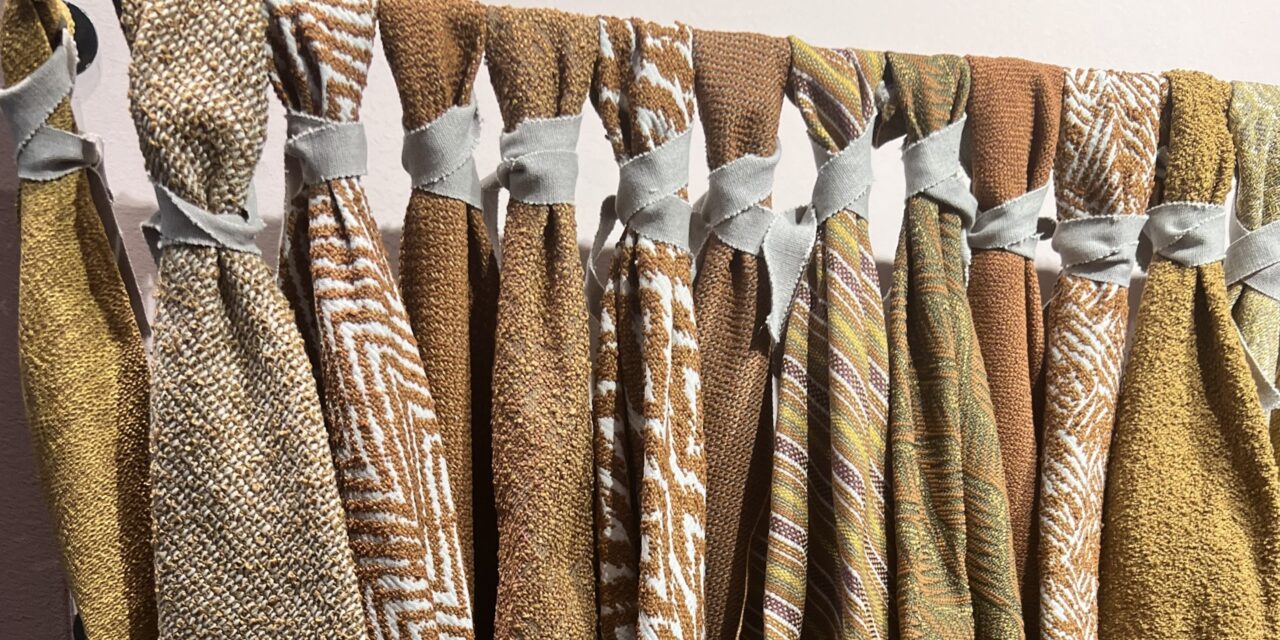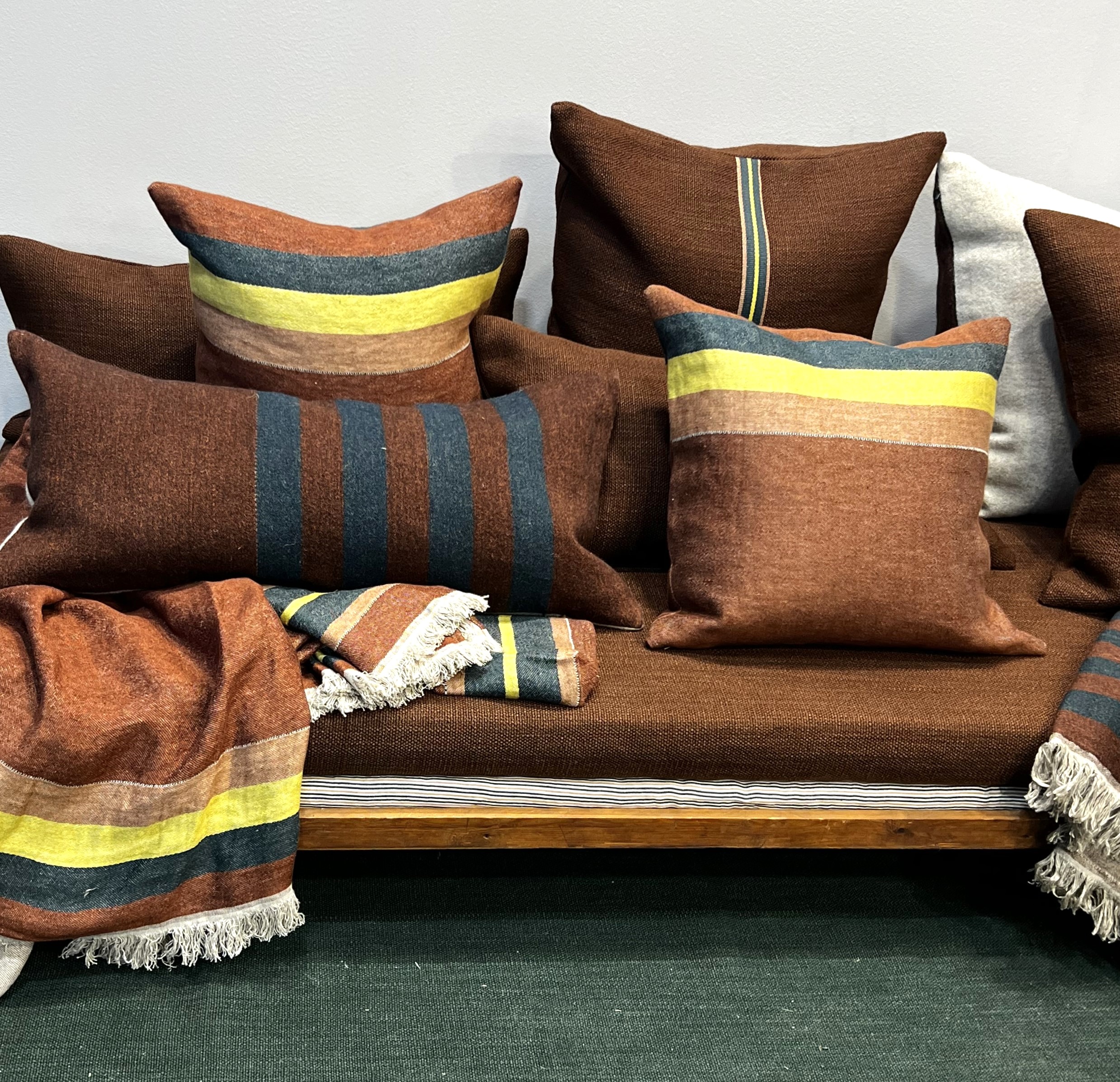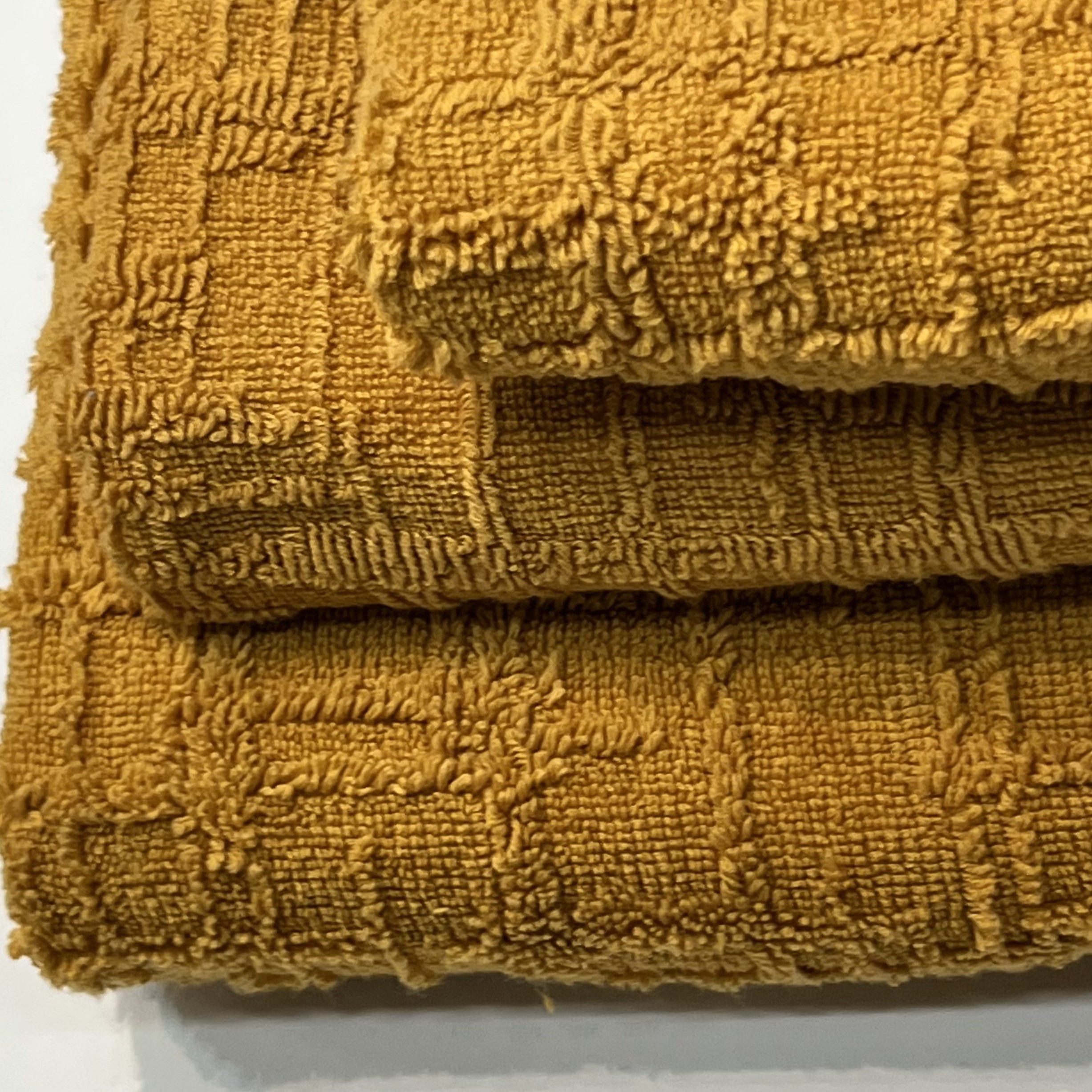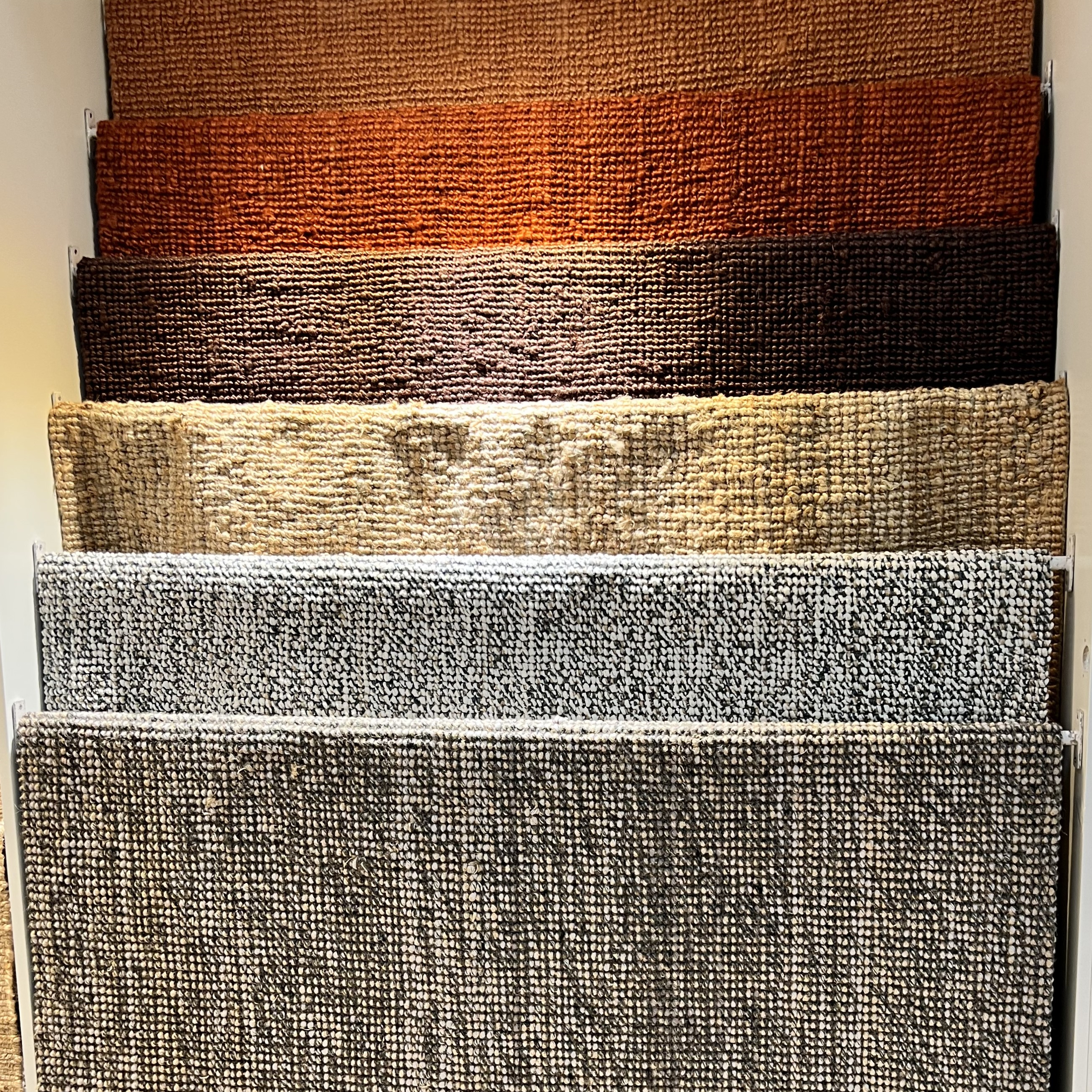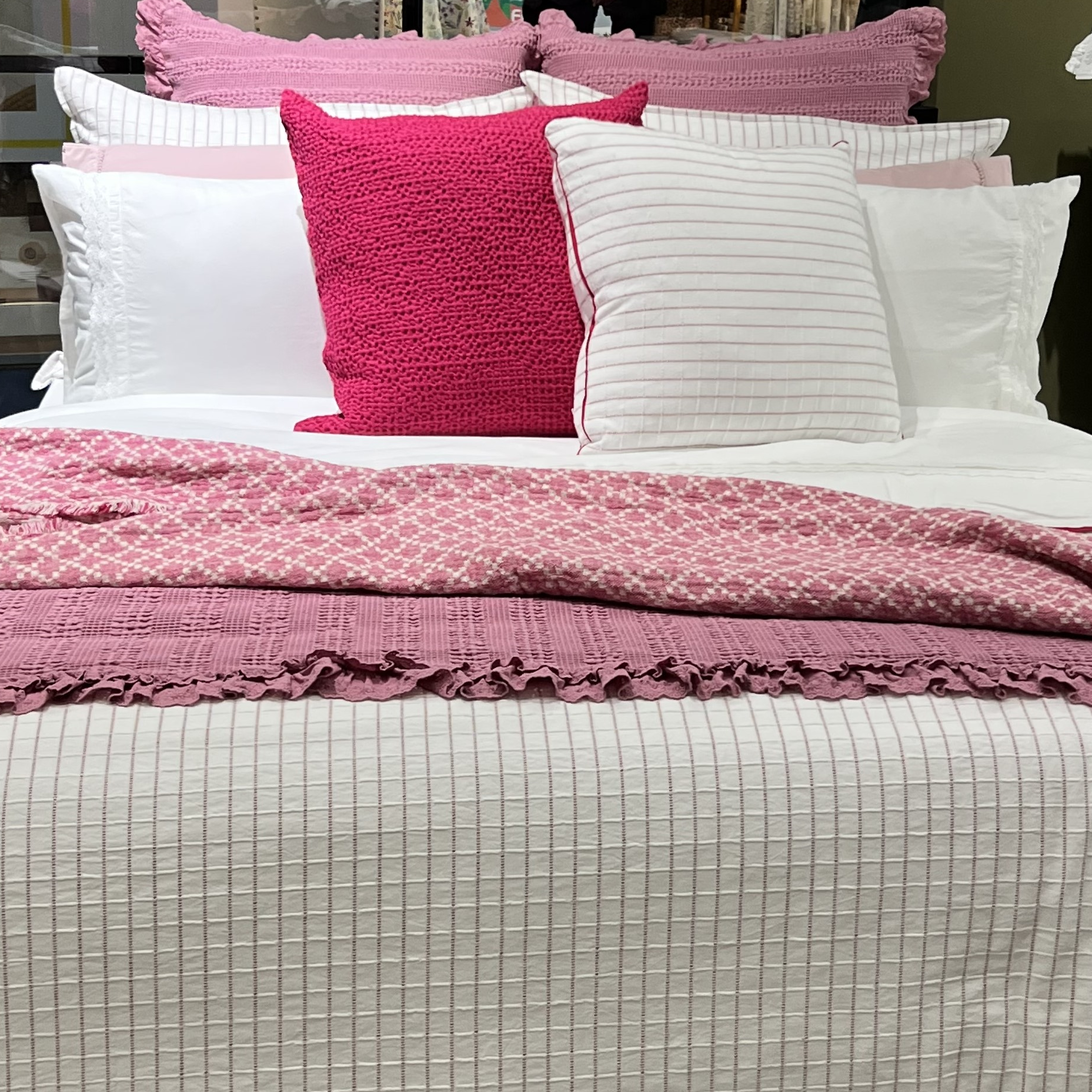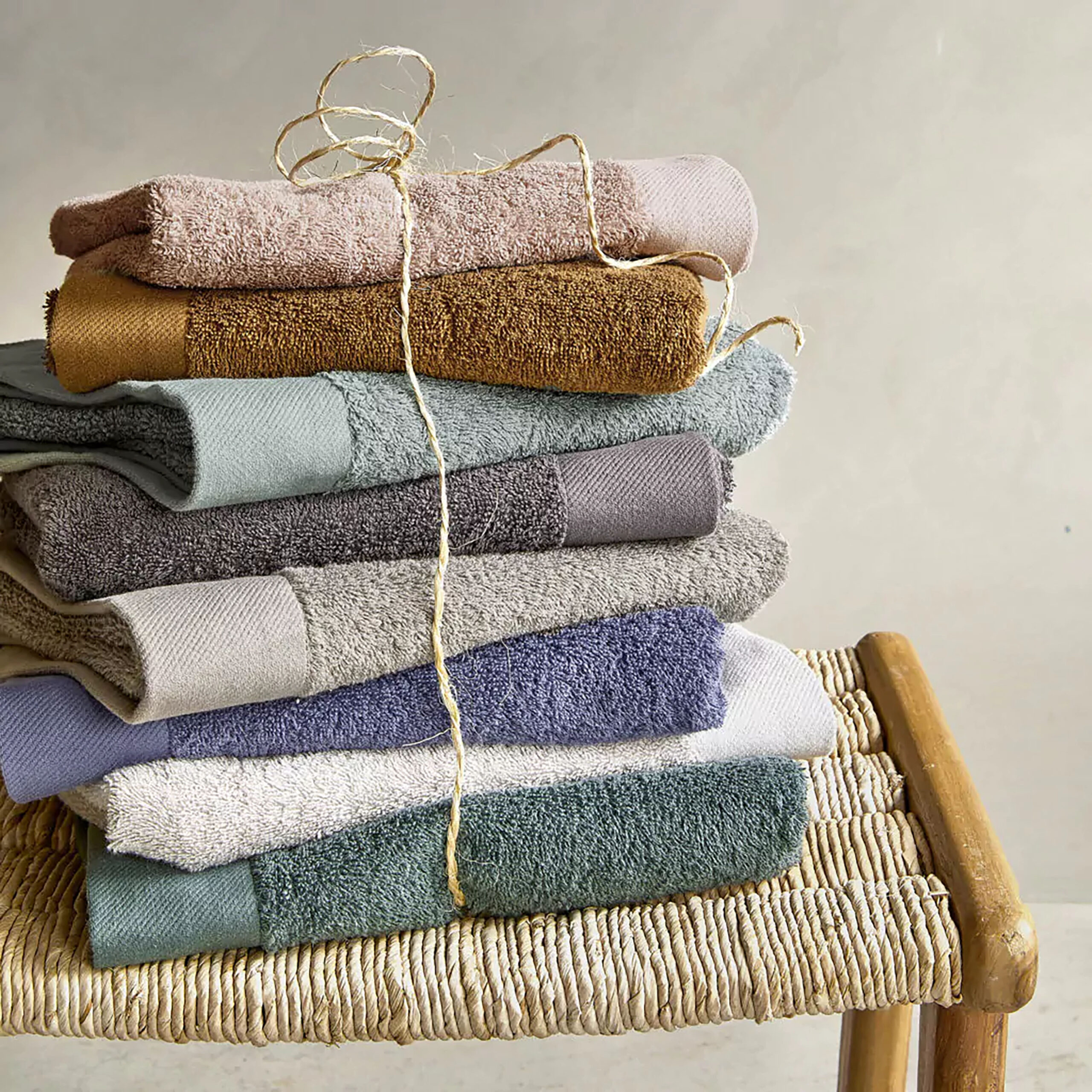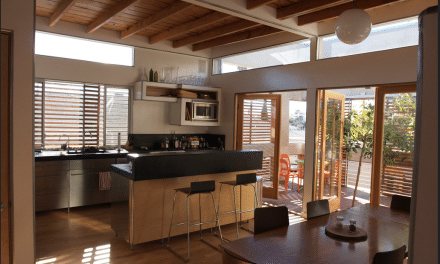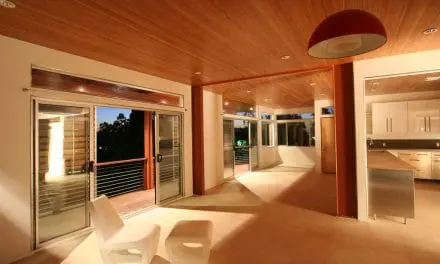Image Blù Textiles
Sustainability is gaining prominence at home furnishings shows across the globe
By Elaine Markoutsas
From the bedding we sleep on, the blankets and throws we cuddle under, to the towels we use in the kitchen and bath… To the upholstery covering our furniture, draperies framing our windows, rugs warming our floors… Textiles touch our lives every day, 24/7. Sustainable textiles and discussions around ecology have been gaining momentum across the globe. This year at building and home furnishings shows there’s a clear sense of urgency around eco-friendly fabrics and a collective call to action to green the home textiles industry.
One hundred billion pieces of textiles are manufactured each year, including clothing. And global textiles are already a $993 billion business, topping $1 trillion by the time you read this. But here are some sobering statistics. The textile industry is the world’s second largest polluter (after the oil industry). The US alone produces 11.3 million tons of textile waste. More than 35% of ocean microplastics trace to synthetic textile fibers. Around 5% of total global emissions, 1.2 billion tons of CO2 annually, come from the textile industry. Add to that, 20% of the world’s wastewater comes from textile-industry discharge.
Circularity: a global trend
Textiles Matter was the theme at Heimtextil, the largest international trade show for decorative textiles held in January 2023 in Frankfurt, Germany. The show organizers took a definitive ecological stand as they acknowledged their power in the home textiles industry. The Heimtextil Trend Council analyzed global trends relating to design. Three agencies—Franklin Till Studio (Great Britain), sPOTT Trends & Business (Denmark), and stijlinstituut Amsterdam (Netherlands)—considered their findings in the context of society, sustainability, and circularity.
They delivered four design trends for 2023–24. Displays showed hanging fabrics to fit each theme and demonstrated some radically eco raw materials.
- Make + Remake, focusing on reclaimed and creatively repurposed materials
- Continuous, aimed at zero-waste through textile regeneration
- From the Earth, spotlighting natural fibers and dyes
- Nature Engineered, showing how nature can marry with technology.
“Designing the end at the beginning is the essence of what circular is all about,” said Caroline Till, director and co-founder of FranklinTill Studio. That means, she explained, “understanding entire textile lifecycle: where materials come from and thinking about how they end up at the beginning of the design process.”

Make + remake
Used fabrics, clothing, deadstock, and remnants can all take on a new life with techniques like overdyeing, overprinting, collage, and patchwork. Hues can be vibrant and the result often is maximalist, with layering of color and pattern.

Continuous
Innovative approaches to closing the loop is the focus of Continuous. One example showed how post-industrial waste can be repurposed.
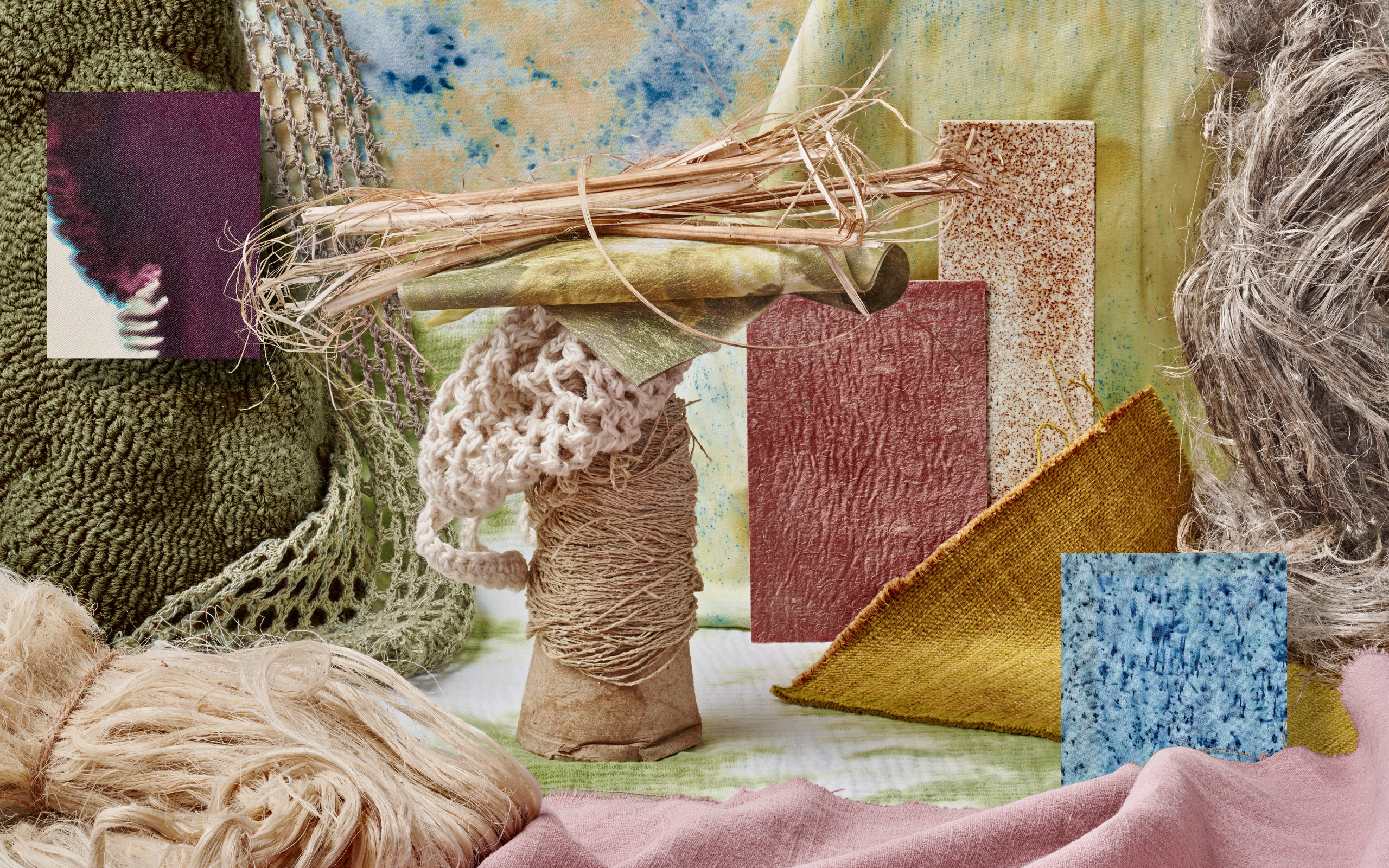
From the earth
Organic textiles are often tactile and textural. Rough-hewn finishes don’t mask natural imperfections or wear. A warm, soft, earthy palette reflects organic matter, botanical hues, and natural dyes, ranging from complex olive and lime to warm beige and pink to bold indigo.
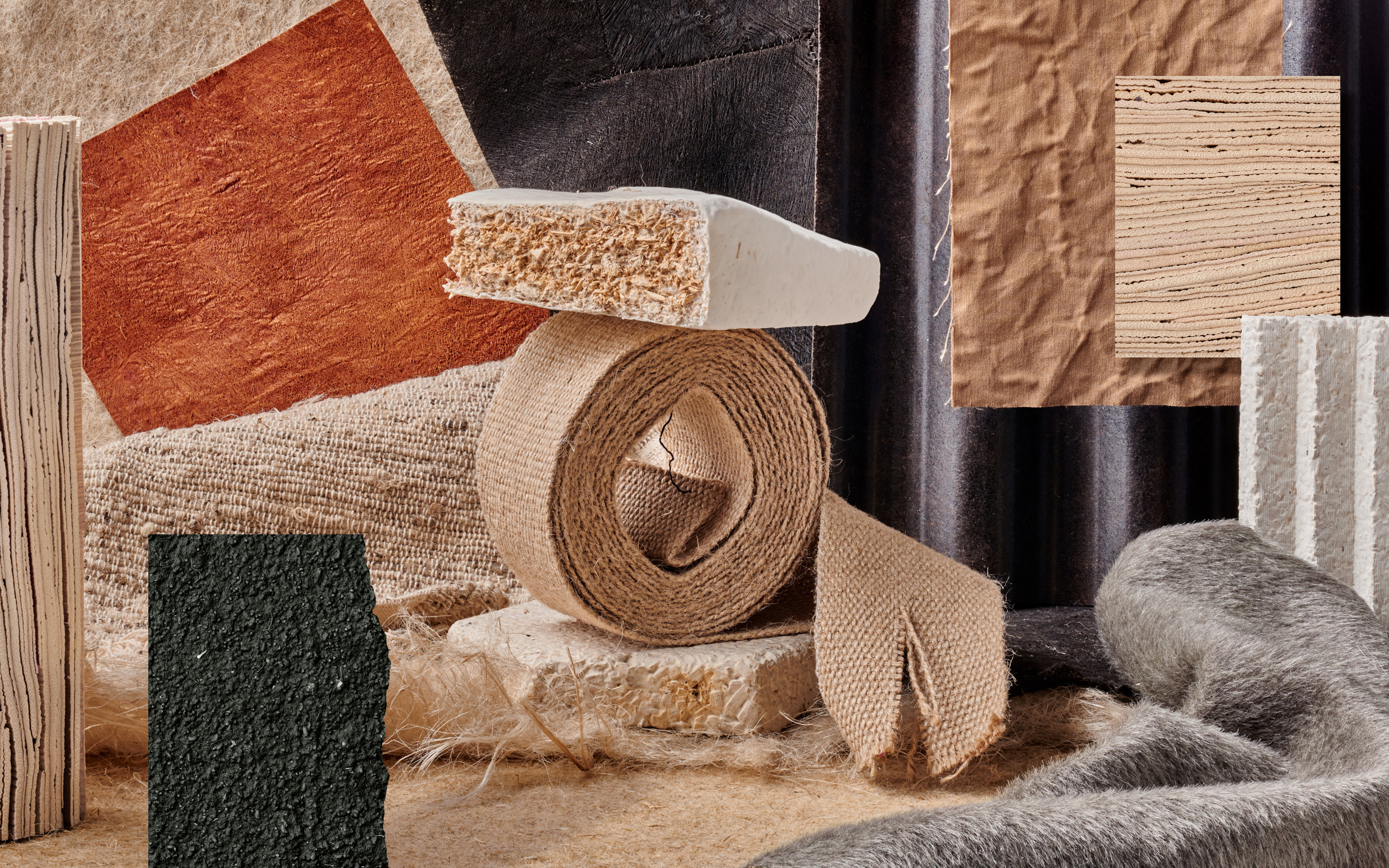
Nature Engineered
A fusion of nature and engineering shows undyed and unbleached ingredients. Fresh complex modern neutrals are soft and refined, not hard urban gray. Colors range from warm beige and tan to green-brown and brown-green, with muted terracotta and peach.
Eco-friendly fabrics: changing minds
“It’s time to change not only narratives, but mindsets,” said Dr. Anabel Ternes von Hattburg, futurologist and managing director at the International Institute of Sustainability Management. She suggested this can be done through whole-system thinking. Or “acting from the perspective of a world fit for grandchildren, acquiring new future skills. This requires new evaluation criteria and a new leadership.”
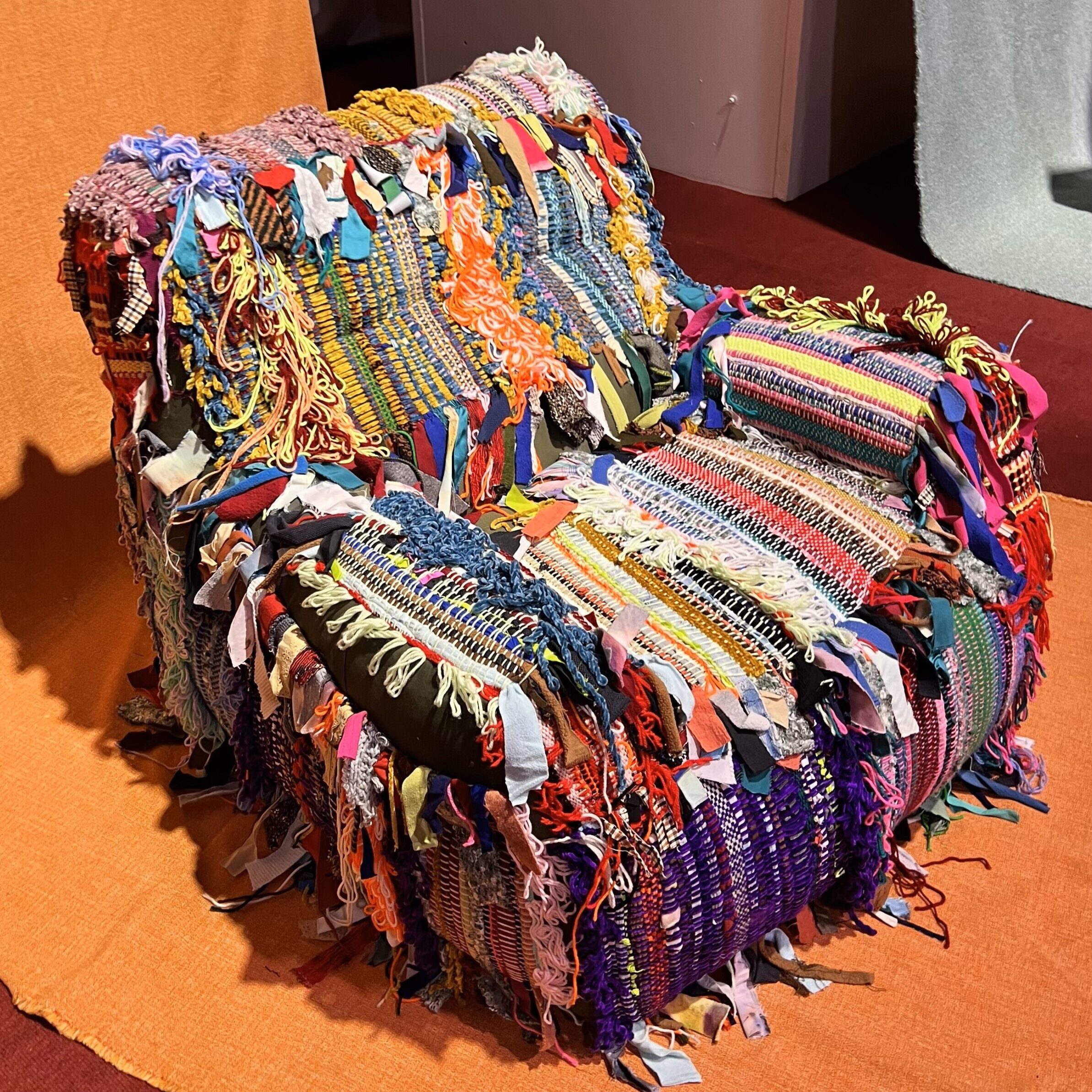

UK-based Biohm is a leading pioneer in the research and development of biobased materials. Orange peels and coffee beans are paired with an organic binder to create a sustainable replacement for wood-based materials. The new material, called Orb, can be pressed, molded, extruded or 3D-printed. Biohm’s Obscure collection of lampshades is made from Orb. At the end of their lives, the lampshades can be fed back into production or composted.
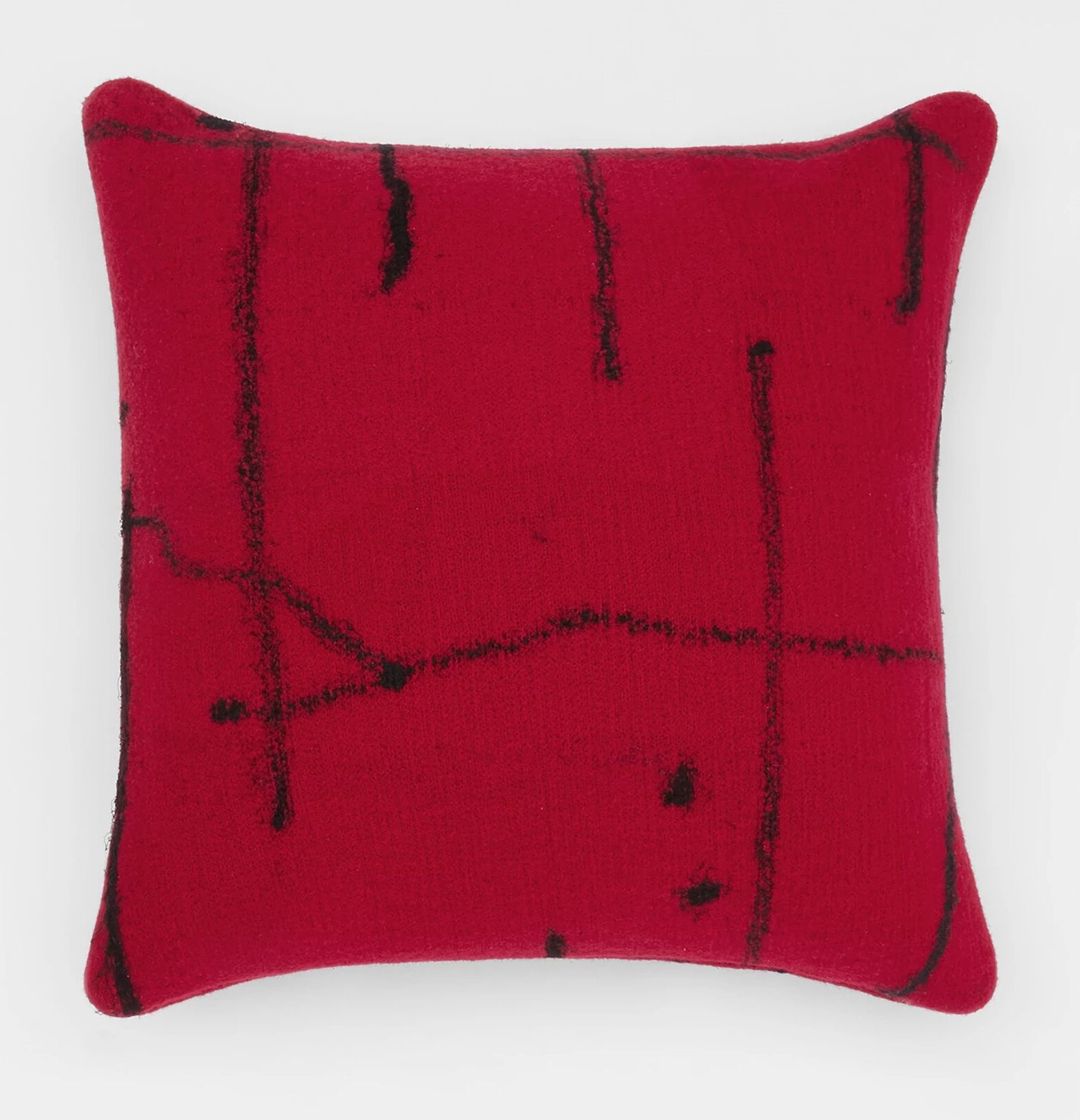
Materials and finished furnishings demonstrated US-based fashion designer Eileen Fisher’s Waste No More initiative. Fibers and colors from damaged and used Eileen Fisher garments are deconstructed, using a small batch needle punch machine to create a felted material for new products.
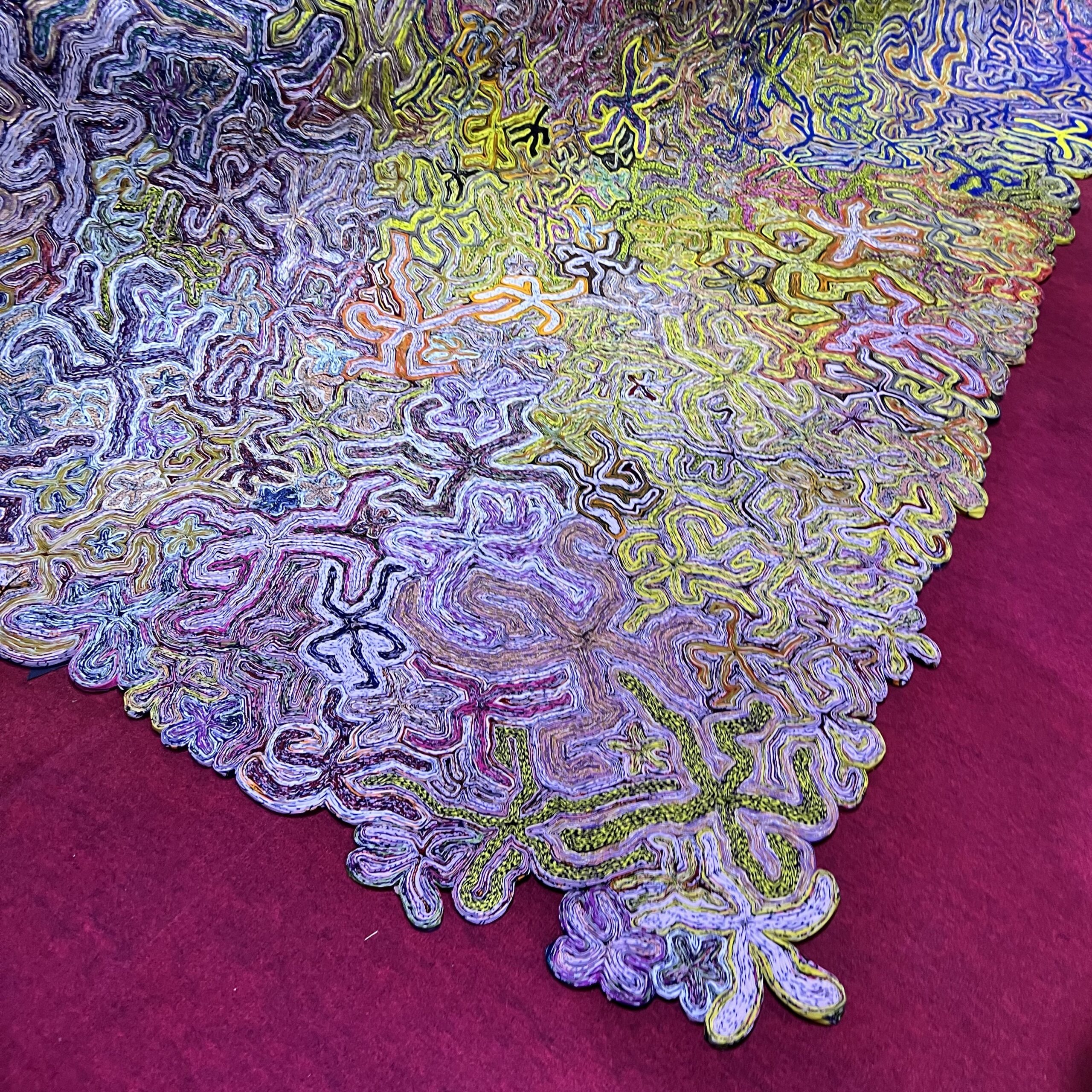
A rug or wall hanging by textile designer Simon Post featured an intricate swirling pattern. It combines waste, jute, and latex. Post works with leading brands such as Kvadrat, Vlisco, and Adidas to turn their waste into new products. At the end of their lives, the pieces can be shredded and used as insulation material or filling.
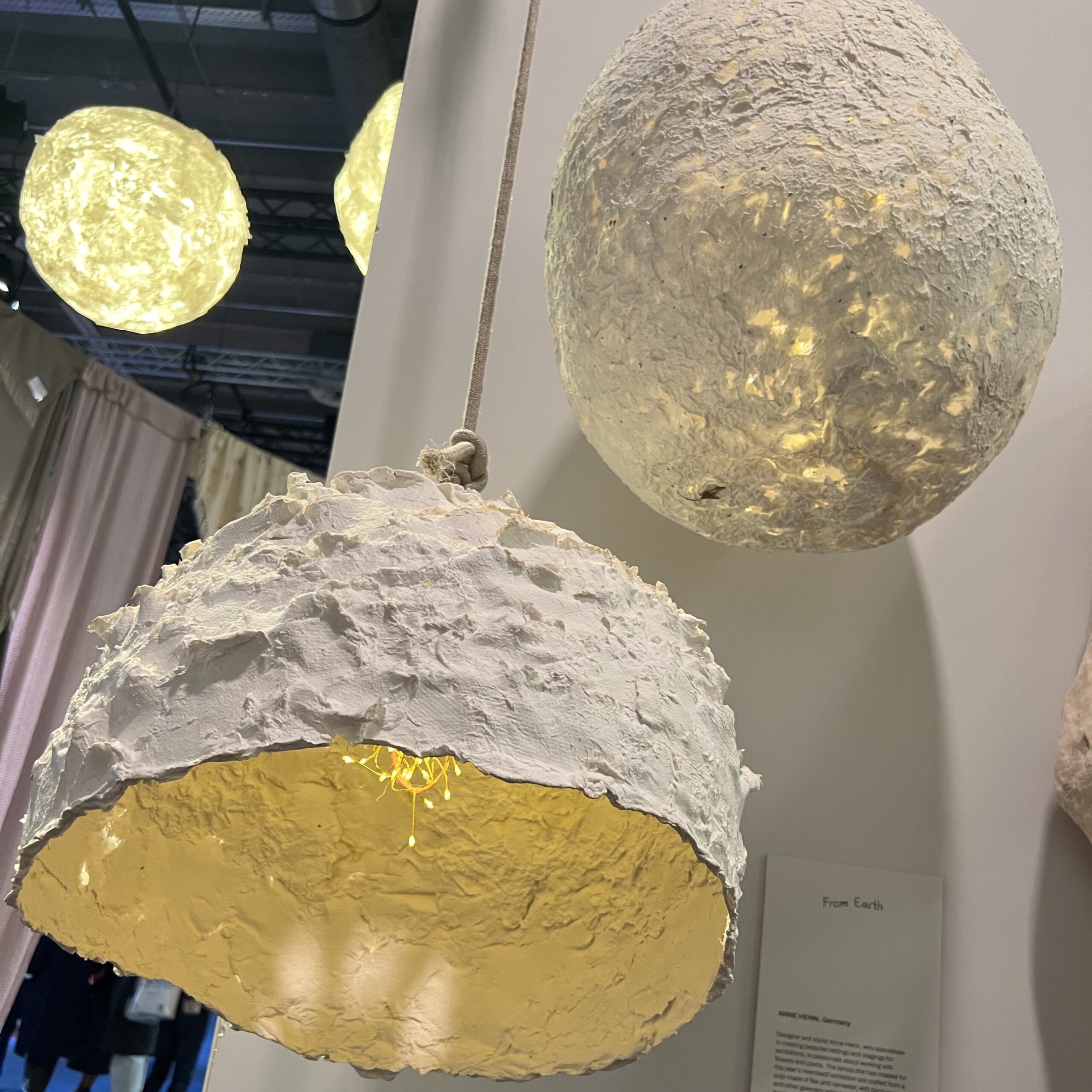
Lighting by Ann Henn was crafted from pulp made of flax and rainwater, with birch leaves and other greenery. The paper-like material was scooped by hand and shaped using a special sieve.
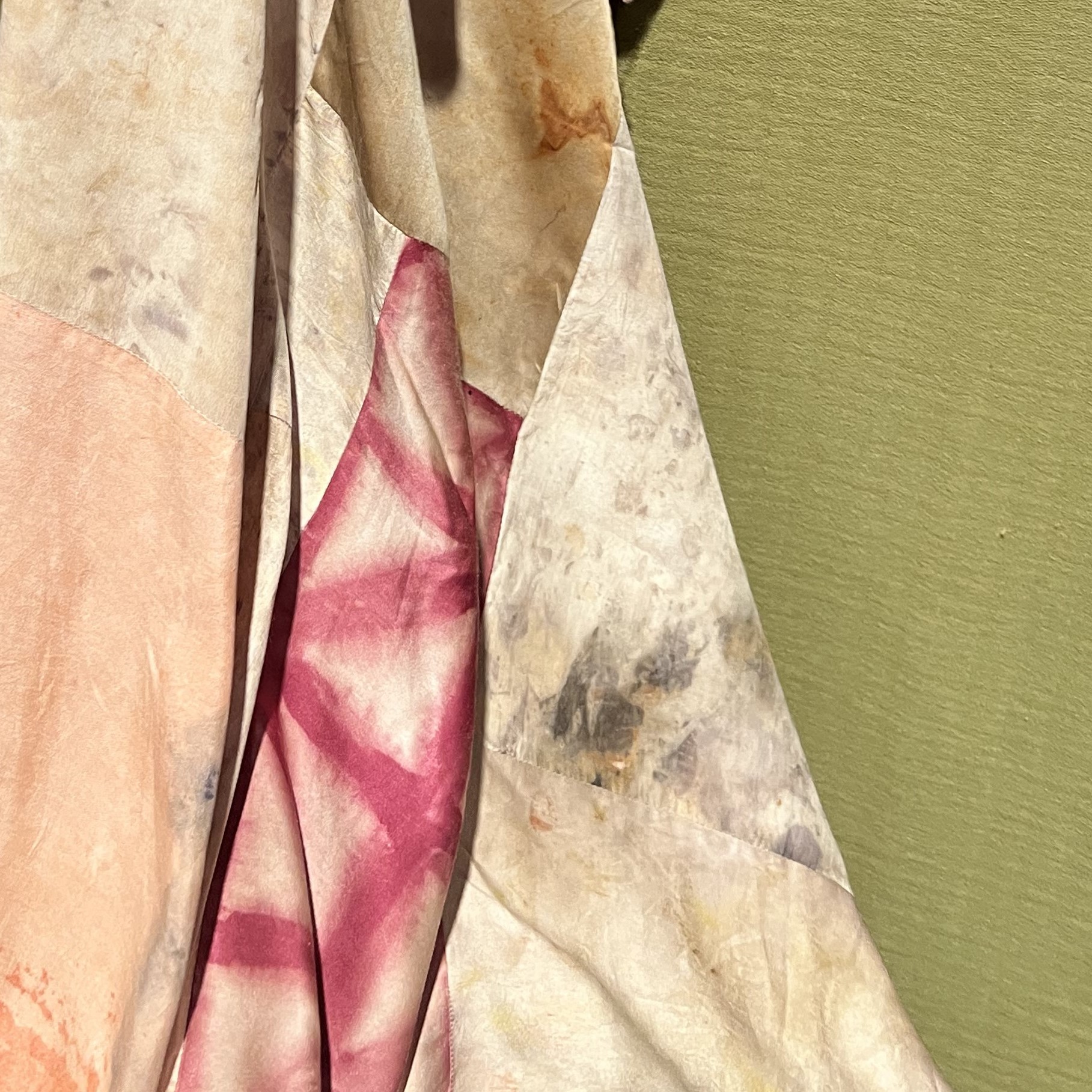
New York artisanal designer Cara Marie Piazza works with botanicals, minerals, food scraps, and tannins to create breathtaking dyes for fashion and the home. Her techniques include bundle dyeing, ancient shibori, and alchemic dyes.
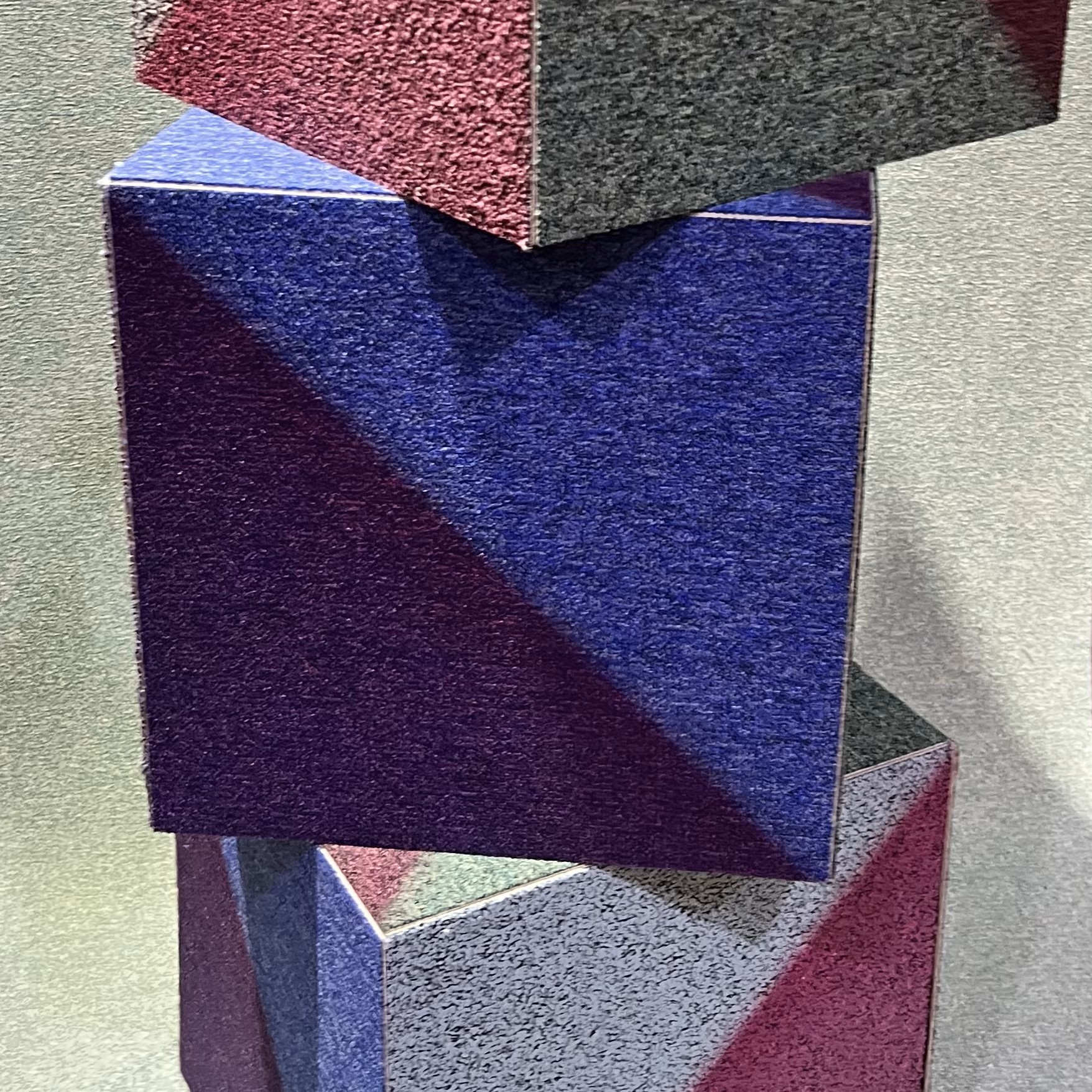
The French brand Tarkett collaborated with the design duo Rens of the Netherlands to produce an innovative collection of recycled floor coverings. A manual dyeing process uses red coloring that interacts with existing yarns to create unique color shades in each batch. The Desso Origin carpet tiles have the lowest circular carbon footprint in Europe for that category.
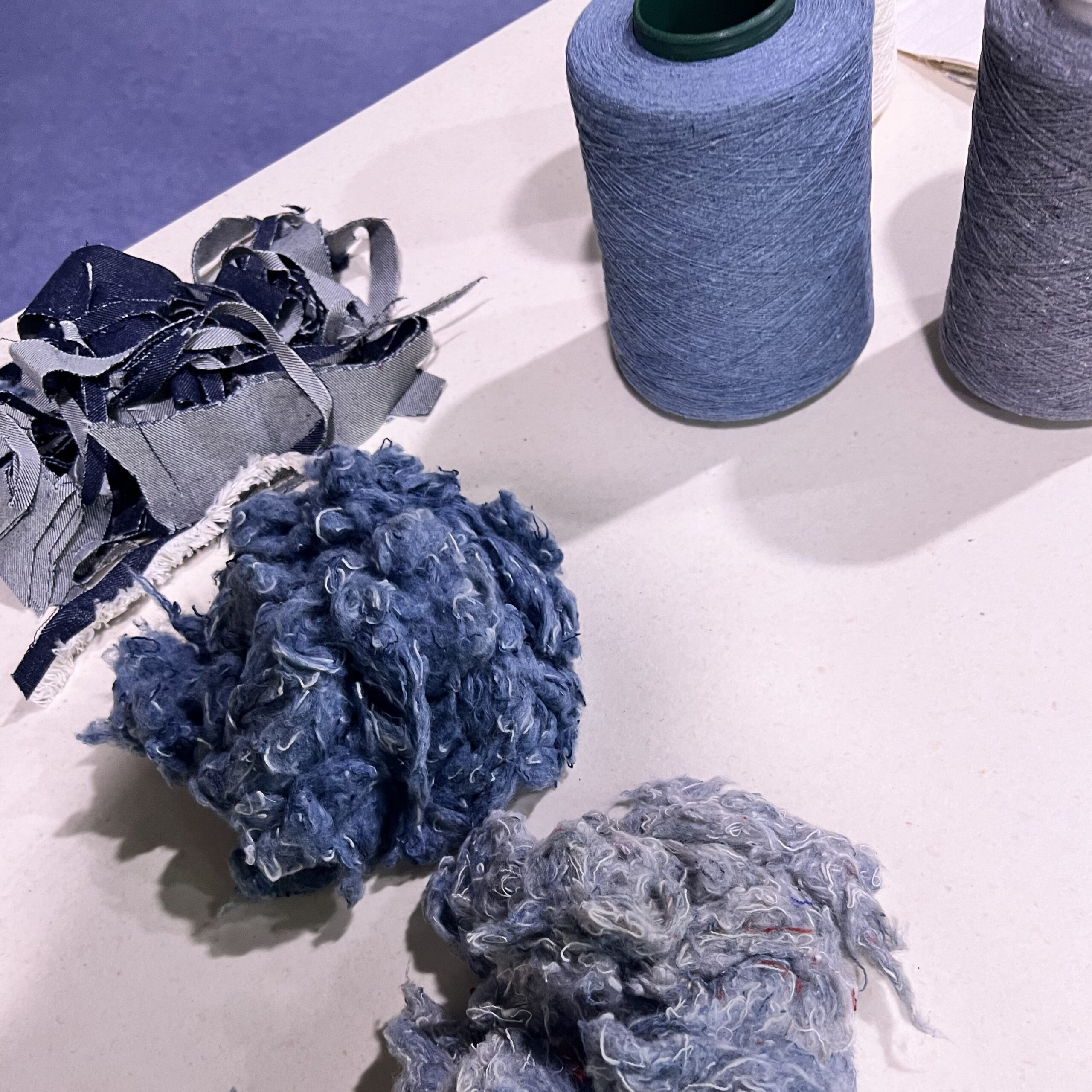
The New Denim project from Guatemala collects and sorts waste from local garment factories. The discards are ground back into fiber to spin into new yarns. The yarns then are woven into the brand’s upcycled fabrics, which include muslins, chambrays, twills, canvas, and denim upholstery. The process is chemical and dye-free and uses minimal waste and energy. Cottonseed and cotton lint waste are passed on to a local coffee grower.
How do you know your textiles are eco-friendly?
There are many certification labels worldwide. Some monitor everything from raw materials to finished product. There also are green labels for recycled products. For the largest global directory, see ecolabelindex.com. It currently tracks 456 ecolabels in 199 countries from 25 industry sectors.
But here are some of the best known eco-labels:

Global Organic Textile Standard (GOTS). Covers textiles processing, from acquiring raw materials to product labeling. Assuring the whole process is environmentally safe, the standard has contributed greatly to the use of organic cotton worldwide.

CarbonNeutral Certification addresses greenhouse emissions and shows an organization’s commitment to neutralizing the existing carbon footprint.

Oeko-Tex is the standard for testing and evaluating products at every stage. It covers raw materials during production to end products, including dyes and finishes. It’s particularly focused on safeguarding human health, considering fabrics that are in direct skin contact. The requirements for these products are stricter. It covers both organic and inorganic textiles.

Better Cotton Initiative (BCI) is a member-based organization comprising producers from the entire cotton supply chain. BCI promotes a comprehensive set of production criteria for growing cotton more sustainably, and has a system in place to assess cotton from farm to gin.

Organic Cotton Standard (OCS) is a tool for brands and industries to get third-party verification of organic materials in products, down to the correct amount used. While it doesn’t address the use of chemicals during production, OCS focuses on the authenticity of the organic material.

Naturtextil BEST requires 100% certified organic fibers, restricted fiber processing methods (bleaching, chlorination, mercerization), limited range of dyes, and no input of hazardous substances (such as formaldehyde, PCP, TCP, heavy metals).
Several eco-friendly brands stood out
Signage throughout the show highlighted various ecolabels to create awareness among buyers and manufacturers. The Seventeen Sustainable Development Goals (with a goal of Net Zero 2050 and provisions for work environment and Fair Trade practices) were prominently displayed. It’s a collaboration between the United Nations Office for Partnerships and the Conscious Fashion and Lifestyle Network.
Even the booths were part of a “materials manifesto.” Furnishings were rented or borrowed, to be returned when possible. Exhibits were designed for circularity, considering the next life, while avoiding new. Working with nearby suppliers and collaborators reduced transport emissions and supported local business.
You probably wouldn’t recognize most of the brands exhibiting at Heimtextil. It’s designed for retailers. But you may see many of their products at IKEA, Wayfair, Kohl’s, H&M, HomeGoods, Ross, and Macy’s. Even at high-end design platforms like Perigold.
Many importers from bedding brands like Revman International and WestPoint Home shop the show. Others create private-label lines for exclusive home furnishings and textiles.
Libeco, Belgium
This fifth-generation Belgian family label is the gold standard for linen. The 100% linen fabric is used for bedding and home goods in which signature wrinkles are part of the allure and boho aesthetic. The source of linen is flax, one of the most environmentally natural fibers in the world. Processing flax crops leaves zero waste, and it also removes CO2. In Europe alone, the current flax crop absorbs the CO2 equivalent of a car driving nonstop for 1,337 years.
Libeco collects its debris from shearing fabric, which is repurposed into insulation. The mill is powered by solar, and the brand’s circular design has earned Cradle to Cradle certification.
Sorema, Portugal
Sorema produces its own electricity in its manufacturing facility. It implements water-saving measures, as well. The bath linens use only organic cotton (GOTS certified), and the natural dyes are extracted from small stones and transformed into colored powders. All the packaging is sustainable.
Karupannya Rangpur, India
Their rugs, fabrics, and baskets are handwoven and eco-friendly, using natural and recycled materials. Energy comes from renewable, solar power, and rainwater is stored and harvested to preserve local clean water resources.
INUP Home, Portugal
INUP’s RE-TRACE program focuses on a circular economy for spinning and weaving. Reusing leftover materials and transforming them into new threads gains new life for INUP’s latest blanket collection. Further, technologies such as low-bath-ratio machines minimize water consumption when dyeing or washing fabrics. More recently, the brand earned Responsible Wool Standard (RWS) and European Flax certificates, ensuring all raw materials are authentic and ethically sourced. Look for their GOTS and GRS certifications.
Vespo, The Netherlands
The company uses 100% recycled cotton for their bath mats, quilts, curtains, bed linen, and other home textiles. With little demand for new materials, water consumption and CO2 emissions are both reduced. Collected textiles and cut-offs are reused and blended with PET bottles, which actually strengthen and preserve the quality of the fabric.
REMOkey, an independent firm, evaluates and communicates each product’s savings in water, CO2 emissions, and energy usage, helping customers trust and verify.
Our team researches products, companies, studies, and techniques to bring the best of green building to you. Elemental Green does not independently verify the accuracy of all claims regarding featured products, manufacturers, or linked articles. Additionally, product and brand mentions on Elemental Green do not imply endorsement or sponsorship unless specified otherwise.


